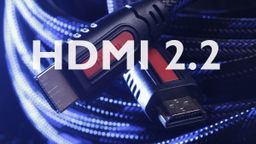Scientists have managed to develop hydrogels that allow cell culture under high-frequency alternating magnetic fields. This is an important advance in the search for new therapies to cure spinal cord injuries. This advance will allow the incorporation of nanoparticles that transport nanomedicines to the damaged area to act on it with greater precision.
The advance is the work of a team that includes Julia Martínez Ramírez and Concepción Serrano, both from the Madrid Institute of Materials Science (ICMM), dependent on the Higher Council for Scientific Research (CSIC) in Spain.
“The challenge is to develop a three-dimensional therapeutic matrix that is biocompatible and biomimetic with the spinal cord,” explains Concepción Serrano. The goal in this line of research and development is to cure spinal cord injury by inserting a biomaterial into the damaged area of the spinal cord that emits signals that cause the healthy area to expand and colonize the gap caused by the damage. “No one has achieved this until now,” says Serrano.
The researcher explains: “We cannot expect neurons to grow without physical and chemical support to guide their growth. This implies that the biomaterial we develop is mechanically compatible with the spinal cord, something to which very little attention has been paid until the date”. To do this, they have explored collagen, a very abundant protein within the body of mammals that also promotes the growth of blood vessels. “As it is part of the body, it will be biocompatible, biodegradable and have good mechanical support, as well as a reservoir of molecules that carry reparative messages,” adds Serrano.
The result has been a very soft and, therefore, compatible foam: “The spinal cord has an elasticity of about 600 pascals, and we have made our foam only about 4 times more rigid. To put it in context, the greatest Some of the biomaterials explored to date were on the order of 50 to 200 times more rigid, so we are much closer to success in this regard. In fact, we have observed that we are already in a range that the spinal cord tolerates without generating friction forces that generate unwanted scars.
Neural networks grow under high-frequency alternating magnetic fields. (Image: ICMM/CSIC)
The innovative aspect of this research goes further, as it explores this material for the treatment of spinal cord injury, makes it respond to the magnetic field and, in addition, incorporates nanocarriers that will be able to carry therapies (nanomedicines) where they are needed. “We have used iron oxide nanoparticles that we have also coated with natural polymers to make them even more biocompatible when interacting with cells,” explains Serrano. The polymers chosen were hyaluronic acid and chitosan, a derivative of chitin that also has bactericidal and neuroprotective properties, and whose production is “very simple and cheap.” In fact, the study has already been able to conclude that this last polymer seems more favorable to the cultivation of neural cells.
These hydrogels have already been implanted in a rat animal model, so the next steps of this research involve analyzing whether they fulfill their purpose within the implanted organism and, at the same time, functionalizing the nanoparticles so that they act as carriers of nanomedicines. “We have managed to make these magnetic matrices, characterize them well, and see what happens if we put them in contact with cultures of neurons, which will be what they find when they are implanted,” summarizes Serrano, who highlights that they have already been able to verify how “neurons grow without problem and create highly interconnected networks.
The study is titled “Hybrid hydrogels support neural cell culture development under magnetic actuation at high frequency.” And it has been published in the academic journal Acta Biomaterialia. (Source: ICMM / CSIC)












![[Img #72078]](https://thelatestnews.world/wp-content/uploads/2024/04/New-hydrogel-to-grow-neural-cells-to-repair-spinal-cord.jpg)


![[Img #74664]](https://thelatestnews.world/wp-content/uploads/2024/12/James-Watson-The-controversial-genius-behind-the-double-helix-300x200.jpg)